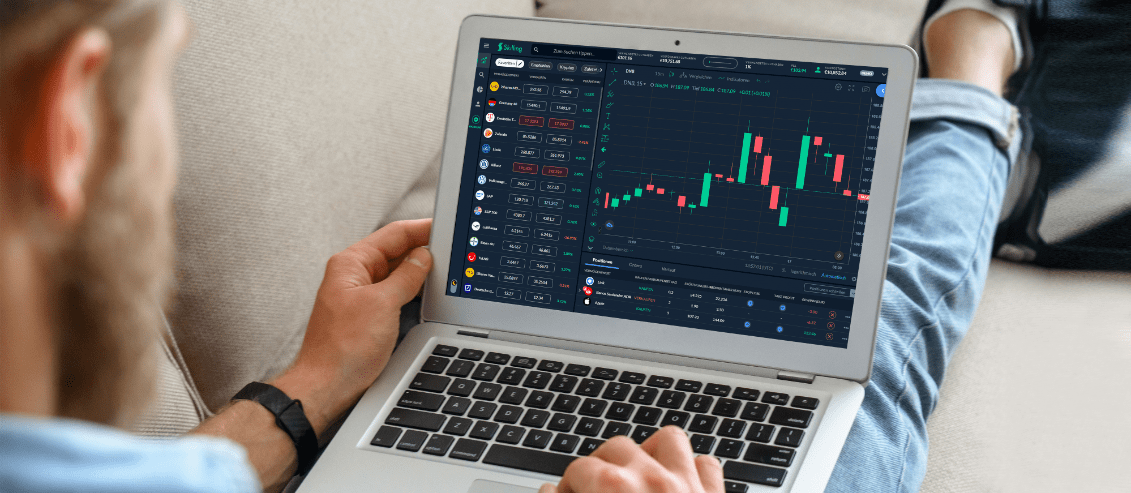Swing trading in the forex market is a unique strategy that takes advantage of price movements over a few days to several weeks. Unlike traditional day trading, where positions are opened and closed within a single trading day, swing trading involves holding a position for a more extended period, providing the opportunity for more significant gains from shifts in the market.
In swing trading, traders carefully analyse market trends, identifying potential entry and exit points to potentially maximise profits. This strategy allows for a more patient approach, as traders aim to capture more significant price movements over a longer time frame. By utilising technical analysis tools and indicators, traders in the UK can make informed decisions about when to enter and exit trades, enhancing the probability of success.
Swing trading offers flexibility, allowing traders to participate in the forex market without constantly monitoring price fluctuations throughout the day. I can appeal to individuals with other commitments or prefer a less intensive trading style.
Swing trading provides an alternative approach to forex trading, offering the potential for significant gains by capitalising on medium-term price movements. Proper analysis and risk management can be rewarding for traders seeking to take advantage of market fluctuations over extended periods.
Swing trading explained
Swing trading hinges on capturing a single move or “swing” in the markets. A vital element of this strategy is identifying when there is a high probability of a swing occurring and then allowing the movement to develop. It allows traders to capitalise on short-term price movements without committing capital for extended periods.
Swing trading strategies involve entering and exiting trades around the same prices multiple times over a certain period. Traders look at news events, fundamental indicators, and technical analyses such as support and resistance levels and trendlines to identify opportunities.
The aim is to buy at the beginning of a swing and sell before it ends, which can generate significant returns when done correctly as traders capitalise on movements in both directions. Swing trading also allows for more creativity than traditional day trading since each trade doesn’t have to occur within a single day.
Advantages of swing trading
Swing trading offers a unique set of advantages to forex traders. By taking a longer-term view, traders can avoid the stress of constantly monitoring their positions. It allows for more patient and strategic decision-making based on interpreting market patterns over extended periods.
It also provides flexibility as trades don’t need to happen within the same day, allowing traders to take advantage of price movements over several days or weeks. It can be especially beneficial for traders with other commitments who may need more time to monitor markets daily.
Swing trading offers more control than traditional day trading, as a single position is held throughout a trade, allowing traders to manage risk more effectively by setting stop-loss and take-profit orders.
Disadvantages of swing trading
Swing trading isn’t without its risks. By holding a position for multiple days or weeks, losses can accumulate quickly if the market turns against you, so deploying appropriate risk management strategies, such as setting stop-losses to limit losses, is essential.
Swing trading also requires a thorough understanding of the market and constant monitoring of prices. The strategy relies on accurately predicting where the price may move in the future, so it’s essential to understand technical indicators and analysis tools before deploying this approach.
Using a regulated broker is also critical. As positions are held for an extended period, choosing a broker like Saxo Capital Markets that offers excellent customer service and guaranteed stop-loss protection is essential.
Essential tools and techniques for swing trading
Swing trading in the forex market requires a thorough understanding of technical analysis and identifying potential entry and exit points. A few essential tools and techniques can help make this strategy profitable.
An essential tool for swing traders is technical indicators like Moving Averages, Support and Resistance levels, MACD, RSI, Bollinger Bands and Fibonacci Retracements. These tools can help traders identify potential entry and exit points and determine the direction of the trend.
A good understanding of risk management strategies is essential for swing traders. Setting stop-losses to limit losses on trade is as important as setting take-profit levels to lock in gains once a position moves in your favour.
Wrapping up
Swing trading in the forex market offers a unique approach to trading, allowing traders to capitalise on medium-term price movements. The strategy can offer significant rewards when done correctly, but it’s essential to understand the risks involved and understand technical analysis before deploying this approach. With appropriate risk management strategies and research tools, traders can maximise the potential profits swing trading offers.
Swing trading is a prevalent strategy that can be rewarding for those who are patient and disciplined enough to utilise correct analysis techniques when entering and exiting positions. By taking advantage of longer-term market trends, traders can access potential gains in the forex markets without committing capital for extended periods.













Comments